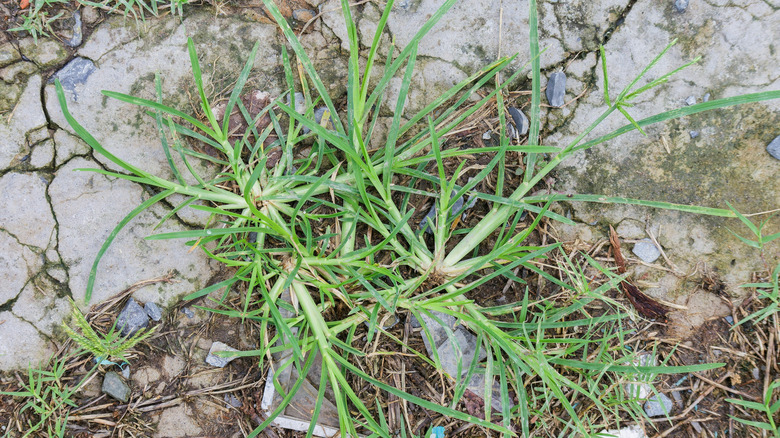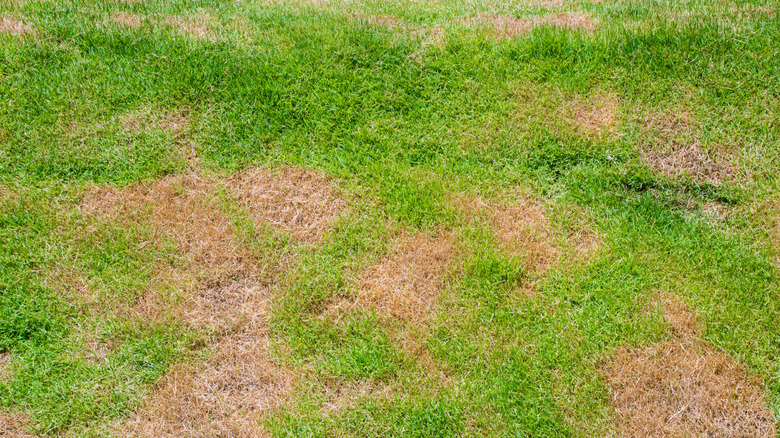Will Vinegar Zap Goosegrass Away From Your Lawn? It's Complicated
Although goosegrass (Eleusine indica) can find a good home in your garden, one of its favorite places to live is in your lawn. It is highly invasive and can set seed even if mowed short, so remove it fast. One of the best ways to get rid of weeds in the garden is to pull them, but it can be a tedious and backbreaking chore. Many people understandably turn to weed killers. There are commercial products available, but with the growing concern about using hazardous chemicals in the yard, homemade solutions are increasingly popular. Vinegar is often suggested, with a little dish soap and salt added to increase effectiveness, but will it zap goosegrass away from your lawn?
The answer is complicated for a couple of reasons. First is the strength of vinegar, or rather the concentration of acetic acid it contains. That is the weed-killing ingredient. White vinegar used for cooking, preservation, and as a versatile cleaning tool has around 5 percent and is probably too weak to tackle tough weeds like goosegrass. Gardening experts recommend a concentration of 20% or higher. It is usually called horticultural vinegar and is widely available in hardware and garden stores. The second complication is how the vinegar (or vinegar mix) should be applied. Get it wrong and you end up with dead goosegrass, but you will also have patches of dead lawn. Let's look at why and offer some solutions.
The best way to zap goosegrass in your lawn
The problem with using vinegar as a weed killer is that it is non-selective. In other words, it kills any plant matter it touches, including weeds, flowers, and grass. Even if you know how to install sod properly and you can do it quickly, it is hardly a task you want as a result of getting rid of goosegrass.
If you've got weeds in hardscaping, using a horticultural vinegar mix in a spray bottle is fine. Bear in mind it will only kill the top growth, not the roots, so several applications may be necessary. For goosegrass on your lawn, try applying it with a low-cost plastic syringe right into the center of each weed. It is more economical because there is no waste, and there is little or no risk of killing your grass.
We have one final complication: there is another weed that is also often called goosegrass, Galium aparine. You might know it as stickywilly or sticky weed because it has short hair that snags on clothes and pet fur. If it crops up in your lawn, you will want to get rid of it, and horticultural vinegar will be just as lethal as with that other goosegrass. However, you might want to learn how to recognize it and leave a little to grow in another part of the yard. It has often been used as a medicinal herb and is recognized as relieving a variety of ailments from bloat to hypertension.

